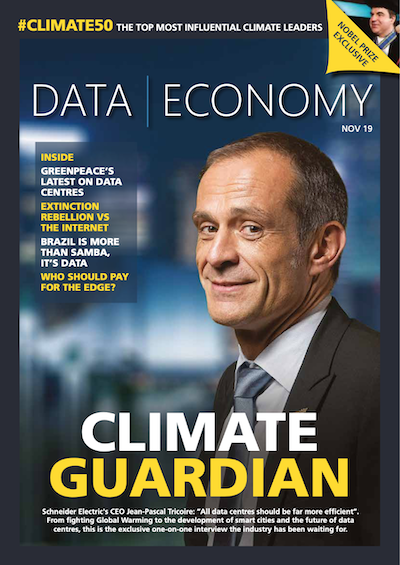This article first appeared in the November 2019 edition of Data Economy magazine.

No matter what you believe is causing climate change, temperatures are rising and extreme weather events are becoming more frequent.
NOAA, Princeton University, and the European Academies’ Science Advisory Council have all found that the likelihood of “100-year” weather events has increased, with a significant uptick in probability in just the past 5 years. Data centers in remote areas may become more difficult to reach physically after a catastrophic event. Water, power, and electricity costs are increasing. And the world’s exploding reliance on digitization makes regulations around uptime reliability more likely.
Any one of these factors can impact data center operations. But together, their impact means change and challenges are ahead.
With few exceptions, existing data centers were not designed with climate change in mind, particularly with regard to thermal reliability. There are more days with extreme high temperatures, and cooling capacity degrades as it gets hotter outdoors.
For a data center running near full load, heat events will increase in both frequency and severity with climate change. Extreme weather events are increasing in frequency, strength, and lasting longer. More rainfall during hotter weather adds humidity as another cause for concern.
What can data centers do to prepare for these eventualities? There are short term and long-term actions that are worth consideration.
Load-leveling
Most data centers do not operate at full load, which so far has prevented climate change-related temperature effects from becoming an issue. Data centers can make this partial-load ratio an intentional plan to offer protection.
If you have some data halls that are fully loaded and others that are partially loaded, then you can either move some of the load into the partially loaded halls or move some of the cooling equipment into the fully loaded halls. However, this would require data centers to know the actual operating capacity of their facility, and not just the designed capacity. To safely do this, you will need metrics to understand real-time airflow conditions and equipment health.
Of course, data centers typically run less efficiently at partial load and experience poorer PUE, which means this method will also require an automated control system that can avoid excessive cooling in partially loaded halls.
More free cooling
While free cooling capacity is highly dependent on the weather, it can still help even when it’s hot outdoors. During an extreme weather event, warm air is still better than no air. This means data centers will need to ensure power is available to operate free cooling in extreme conditions.
The fans used in free cooling systems use less power than the pumps and compressors of mechanical cooling systems, so putting them on UPS could be a good backstop that increases the resilience of your data center.
More capacity
Longer term, new data centers should be designed to make it easier to add capacity over time to accommodate future concerns such as higher loads, denser equipment, and more frequent extreme weather events. For example, data centers serving 5G networking equipment will see significantly higher heat density than the telecom data centers of previous generations. As this transition unfolds it will be important for the cooling infrastructure to keep up.
Whether a facility operator retrofits their cooling infrastructure or adds cooling capacity, the end result is that the make, model, and design of the cooling system will become increasingly heterogenous.
Having a control system that can handle a heterogenous mixture of cooling equipment from different vendors with different designs will become increasingly important. Flexible technology will help data centers adapt to ongoing change.
Changing the Climate Inside Your Data Center
Climate change is not an external force that data centers need to protect themselves against, but rather a market force with which they need to keep up. As temperatures rise outside, or density increases temperatures, cooling must keep pace.
As hot weather persists, maintaining airflow of any temperature is better than not circulating air. And as heat causes more outages, increased capacity will give you the buffer to stay up and running.
For a data center operator, the key takeaway about climate change is that no one is debating that it’s happening, so making sure your business has the resiliency and redundancy to weather any storm is the best possible plan of action.
You can also read this full article in the online version of Data Economy, on page 71.


Speak Your Mind